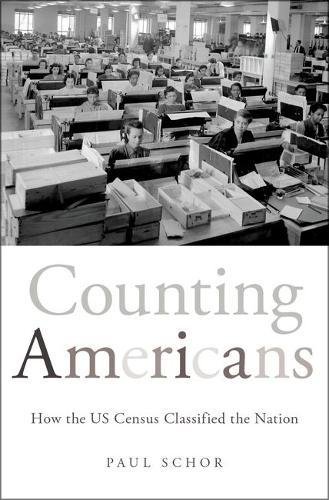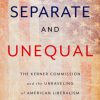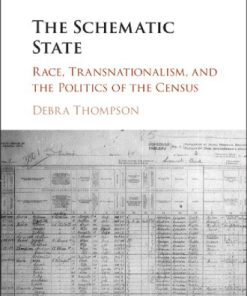Counting Americans how the US Census classified the nation 1st Edition Schor
$50.00 Original price was: $50.00.$25.00Current price is: $25.00.
This completed downloadable of Counting Americans how the US Census classified the nation 1st Edition Schor
Instant downloaded Counting Americans how the US Census classified the nation 1st Edition Schor pdf docx epub after payment.
Product details:
- ISBN-10: 019991785X
- ISBN-13: 978-0199917853
- Author: Paul Schor
How could the same person be classified by the US census as black in 1900, mulatto in 1910, and white in 1920? The history of categories used by the US census reflects a country whose identity and self-understanding–particularly its social construction of race–is closely tied to the continuous polling on the composition of its population.
By tracing the evolution of the categories the United States used to count and classify its population from 1790 to 1940, Paul Schor shows that, far from being simply a reflection of society or a mere instrument of power, censuses are actually complex negotiations between the state, experts, and the population itself. The census is not an administrative or scientific act, but a political one. Counting Americans is a social history exploring the political stakes that pitted various interests and groups of people against each other as population categories were constantly redefined. Utilizing new archival material from the Census Bureau, this study pays needed attention to the long arc of contested changes in race and census-making. It traces changes in how race mattered in the United States during the era of legal slavery, through its fraught end, and then during (and past) the period of Jim Crow laws, which set different ethnic groups in conflict. And it shows how those developing policies also provided a template for classifying Asian groups and white ethnic immigrants from southern and eastern Europe–and how they continue to influence the newly complicated racial imaginings informing censuses in the second half of the twentieth century and beyond.
Focusing in detail on slaves and their descendants, on racialized groups and on immigrants, and on the troubled imposition of U.S. racial categories upon the populations of newly acquired territories, Counting Americans demonstrates that census-taking in the United States has been at its core a political undertaking shaped by racial ideologies that reflect its violent history of colonization, enslavement, segregation and discrimination.
Table of contents:
Part I The Origins of the US Census: From Enumeration of Voters and Taxpayers to “Social Statistics,” 1790–1840
1. The Creation of the Federal Census by the Constitution of the United States: A Political Instrument
2. The First Developments of the National Census (1800–1830)
3. The Census of 1840: Science, Politics, and “Insanity” of Free Blacks
Part II Slaves, Former Slaves, Blacks, and Mulattoes: Identification of the Individual and the Statistical Segregation of Populations (1850–1865)
4. Whether to Name or Count Slaves: The Refusal of Identification
5. Color, Race, and Origin of Slaves and Free Persons: “White,” “Black,” and “Mulatto” in the Censuses of 1850 and 1860
6. Color and Status of Slaves: Legal Definition and Census Practice
7. Census Data for 1850 and 1860 and the Defeat of the South
Part III The Rise of Immigration and the Racialization of Society: The Adaptation of the Census to the Diversity of the American Population (1850–1900)
8. Modernization, Standardization, and Internationalization: From the Censuses of J. C. G. Kennedy (1850 and 1860) to the First Census of Francis A. Walker (1870)
9. From Slavery to Freedom: The Future of the Black Race or Racial Mixing as Degeneration
10. From “Mulatto” to the “One Drop Rule” (1870–1900)
11. The Slow Integration of Indians into US Population Statistics in the Nineteenth Century
12. The Chinese and Japanese in the Census: Nationalities That Are Also Races
13. Immigration, Nativism, and Statistics (1850–1900)
Part IV Apogee and Decline of Ethnic Statistics (1900–1940)
14. The Disappearance of the “Mulatto” as the End of Inquiry into the Composition of the Black Population of the United States
15. The Question of Racial Mixing in the American Possessions: National Norms and Local Resistance
Illustrations
16. New Asian Races, New Mixtures, and the “Mexican” Race: Interest in “Minor Races”
17. From Statistics by Country of Birth to the System of National Origins
Part V The Population and the Census: Representation, Negotiation, and Segmentation (1900–1940)
18. The Census and African Americans Within and Outside the Bureau
19. Women as Census Workers and as Relays in the Field
20. Ethnic Marketing of Population Statistics
People also search:
american counting numbers
america counts and reads
america’s counter attack after pearl harbor
accounting jobs for americans in italy
You may also like…
Politics & Philosophy - Sociology
History - American Studies
History - World History
The human tide how population shaped the modern world First Us Edition Morland
Politics & Philosophy
Politics & Philosophy - Social Sciences
Politics & Philosophy - Government & Politics
The Forgotten Americans An Economic Agenda for a Divided Nation Isabel Sawhill
History - American Studies
America Classifies the Immigrants From Ellis Island to the 2020 Census Joel Perlmann













